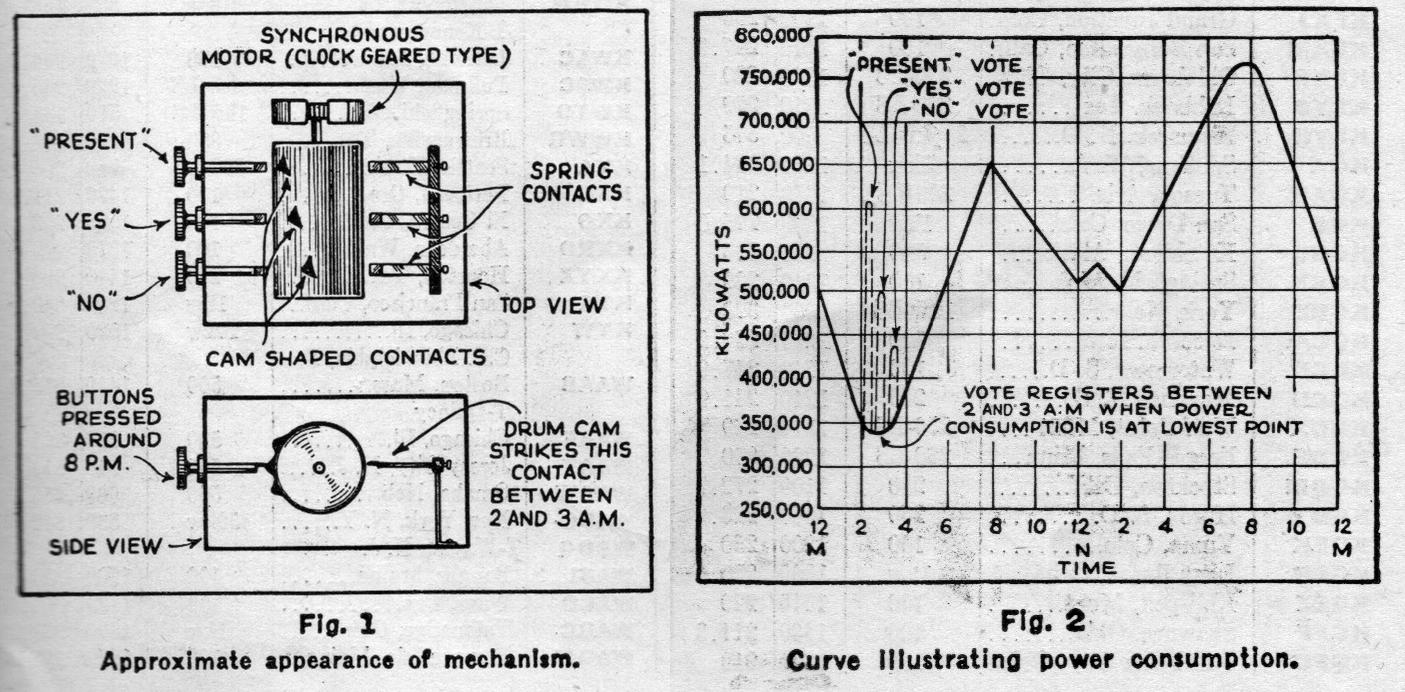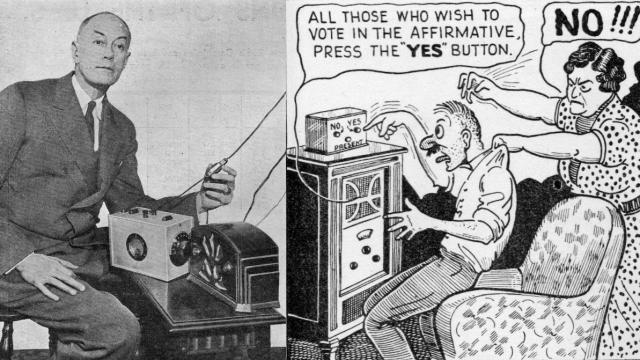Think Facebook invented the Like button? Think again. Back in the 1930s one man hoped to create a device that could send feedback to radio stations with the push of a button. He called it the “radiovota”. Get it? The radio… voter.
Dr Nevil Monroe Hopkins, pictured above left, was a research engineer and lecturer in electrical engineering at New York University. He imagined a world where broadcast media could actually become a two-way street of communication. His radiovota was an interesting little box you attached to your radio and contained three buttons: Present, No and Yes.
Using it, people might express whether they liked or disliked a song. Or they might even communicate with their politicians, using this innovative new system in radical forms of direct democracy. At least that was the techno-utopian idea behind it.
As the June 10, 1937 edition of the Laurens Sun newspaper in Iowa explained, the day was coming when the “president of the United States may step before a microphone, ask a question of his radio listeners concerning some question of public policy and receive an immediate reply from millions.”
Unfortunately, the device was pretty primitive, as you can see from the illustrations below, which I recently discovered in the June 1934 issue of Radio-Craft magazine.

Once the button was pressed, it would take nearly seven hours for the Hopkins invention to register at a monitoring station. The entire system depended on monitoring power consumption (see Fig. 2) in a given area. Not exactly an instantaneous or precise device, but it was the best they could conceive, given the technology of the time.
Nonetheless, people were optimistic that it could lead to incredible things. Hugo Gernsback, sci-fi publishing pioneer, imagined that this technology could also be used for the TV sets of tomorrow .
You can learn more about Dr Hopkins in a piece I wrote for Pacific Standard last year. I mostly just wanted to share these new pictures which show just how difficult Hopkins’ system would have been to implement.
It may have taken 70 years, but thankfully, we now live in a world where no opinion, however banal, goes unexpressed. Dr Hopkins’ dream is a reality, and you have to believe he’d “like” that now-ubiquitous like button. Get it? Like. Just like the button.
Pictures: Scanned from the June 1934 issue of Radio-Craft and the July 1934 issue of Radio-Craft
